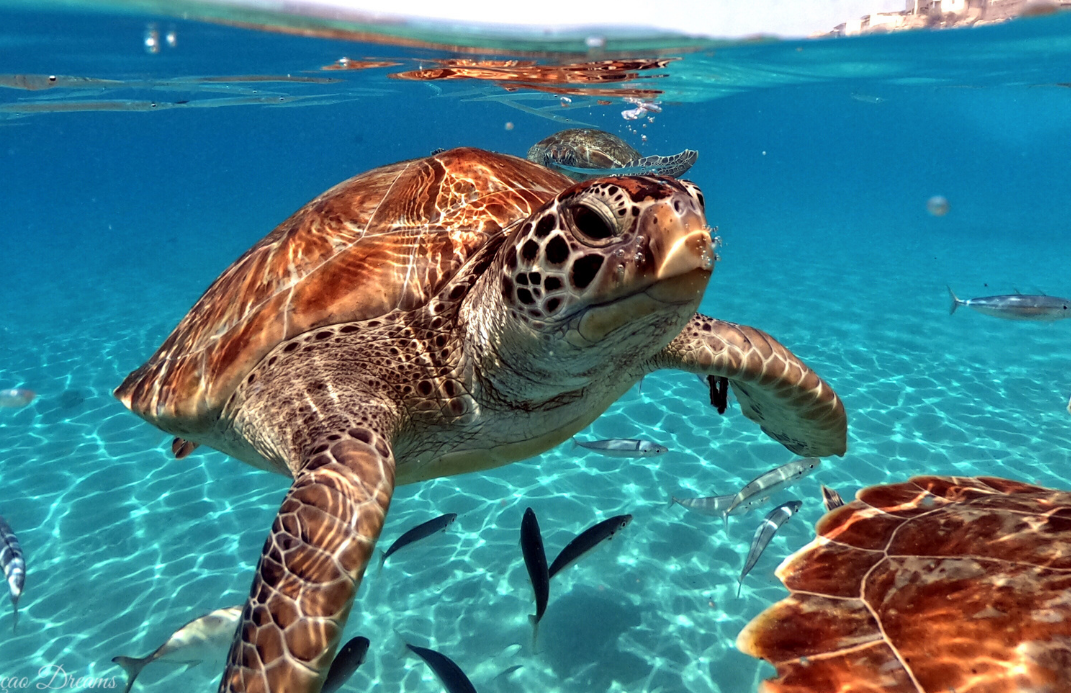
Endangered Sea Turtles Rescued and Returned to the Gulf
We have a #cheer for the news that 13 rescued young sea turtles were released into the Gulf of Mexico from Louisiana — some positive news after a very difficult season for sea turtles. The 13 Kemp’s ridley sea turtles who were released on Monday at Grand Isle were among more than 1,100 cold-stunned turtles who were rescued from the sands of Cape Cod this fall after the turtles experienced dangerous levels of cold weather that was exacerbated by climate change.
In the 1990s, about 100 or fewer cold-stunned sea turtles were found every year off New England, but the average is now more than 600, according to experts. This is partly because more Kemp’s ridley are hatching, but also because the Gulf of Maine is warming faster than any other water body, and that warmth is drawing in more and more juvenile turtles.
Kemp’s ridley turtles are also the smallest and most endangered sea turtles — and all six species found in U.S. waters are protected under the Endangered Species Act.
“All the days and nights over the last four months caring for these turtles have all been for this,” Gabriella Harlamert, the sea turtle stranding, rescue and rehab coordinator at the Audubon Nature Institute said in a news release. “Getting to return them to the wild is why we do what we do, and it’s the best feeling ever.”

Mexican Gray Wolf Population Continues to Expand
We are happy that the number of reintroduced Mexican gray wolves rose by 14 percent in 2020, according to the U.S. Fish and Wildlife Service. The additional 23 wolves documented in the annual population survey brings the number of wolves in the wild in Arizona and New Mexico to 186, the federal agency reported.
“It is gratifying that more Mexican wolves are roaming this little corner of the Southwest,” said Michael Robinson of the Center for Biological Diversity. “But even as wolf howls echo in a few more canyons than before, this population is still vulnerable and needs more stringent protections and more effective releases from captivity into the wild.”
Some environmental groups have pushed for the release of bonded, adult wolves from captivity to help form more packs in unoccupied territory since the bonded pairs in the past have enjoyed a higher survival rate. The U.S. Fish and Wildlife Service has instead focused on the foster pup releases to bolster and diversify the population, which has not been as successful as hoped.

New York Upholds Ivory Ban
Kudos to the federal court in New York that rejected a challenge by trade groups to the state’s landmark ban on elephant ivory and rhino horn sales. It gives us hope not only for the animals—it also affirms the right of states like New York to create laws that protect wildlife and end their own participation in such cruelty.
Friends of Animals is working to get the importation of the trophies of African lions, leopards, giraffes, elephants and rhinos banned in Connecticut and New York. The legislation is moving through the states’ legislatures.
The challenge was brought by the Art and Antique Dealers League of America and the National Antique and Art Dealers Association of America, who argued that the ban was unconstitutional. The court, in its ruling, noted that New York’s prohibition on displaying certain ivory objects not legal for sale in the state “serves New York’s interest of halting the illegal sale of ivory within its borders” and that it is narrowly tailored to that interest because it “reduces the opportunity for, and temptation to engage in, a quick illegal sale.”
New Jersey was the first state to ban ivory sales in 2014, followed by New York. Twelve states and Washington, D.C. have now passed laws or ballot measures banning ivory and other wildlife body parts, including California, Hawaii, Oregon, Nevada, New Hampshire, Illinois, Minnesota, New Mexico, Vermont and Washington.

